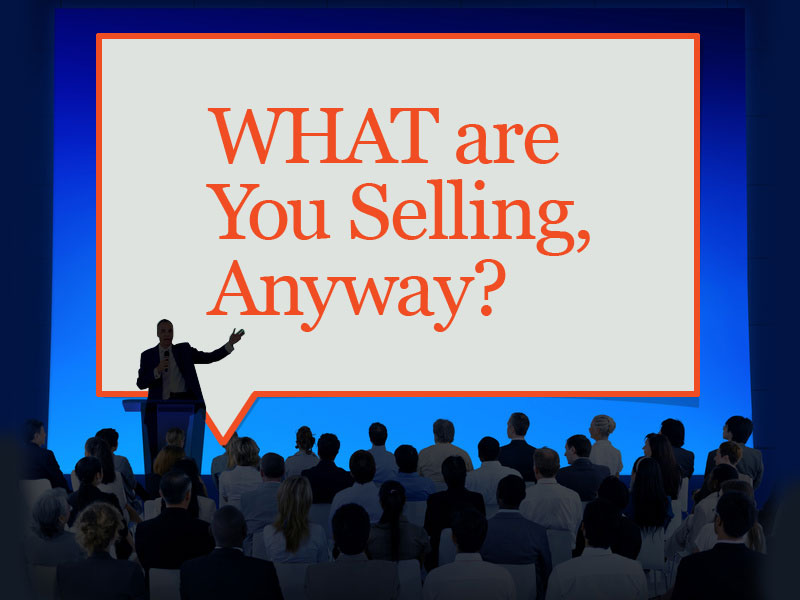Many businesses make the same mistake of talking only about themselves, assuming that their audience will automatically see the connection to what they’ll gain from the services being offered. Some of these businesses take a “build-it-and-they-will-come” attitude that could very well undermine their own long-term objectives. In many ways, this is human nature. We’ve all been conditioned into telling people what we “do” for a living without thinking any deeper about it. In order to be an effective marketer, it’s imperative that we continually remind ourselves of the true value we bring to our markets. Usually, that customer benefit is intangible. Quite often, we learn that it’s an emotional one.
Establish Emotional Connections with Your Audience
For many years, the most popular make of automobile in the Rust Belt was also the worst rated. Anyone who researched repair histories and reliability ratings would have learned that this particular make was not recommended. But, why was it still so popular in this particular region? Well, it had little to do with the intelligence of the consumer. It was mostly because the manufacturer researched their audience very well. They understood them to be primarily blue-collar males and promoted their cars and trucks to appeal to them emotionally. They found a way to mask their less-than-stellar track record and convince them that they had more to offer than just a means of transportation. They also had a long history and instant brand recognition that brought a level of accessibility to the consumers. They offered a symbol that reflected their values. They knew that, by reaffirming those binds, they still had opportunities to preserve market share.
Identifying and Pushing the Buttons
Identifying emotional selling points is best done by creating user personas that provide insights beyond business cases and economics. Understanding their demographics, education, social media profiles and even activism can go a long way toward discovering their emotional buttons, uncovering ways to shorten the sales cycle and building brand loyalty. How do you make their lives easier? What pressure points can you help relieve? What can you offer that helps them sleep at night? What are the long-term benefits that go beyond the product you’re selling.
Make It Clear Why You Matter to Them
Whether you’re selling cars or high-tech widgets, how you promote it should not be about you; it should be about the consumer. Perhaps, there’s a “peace of mind” gained in knowing that a certain problem is being solved. Or, maybe, it’s some form of economic “relief” that the buyer will experience. Or some other “pain point” that is being tempered. It could even be about enabling them to spend more time on things that they do best. These are all emotional benefits.
Moreover, the words and pictures you choose are just as important as the bottom line. Are you speaking in their language or getting caught up too much in industry jargon? Are you using infographics to engage and educate, or using pictures that serve as little more than “eye candy”? Are you using your blog to share your expertise, or treating it as just another a sales tool? Are you putting your audience first or just talking about yourself? Are you focusing on the “whys” instead of the “whats”?
So, step outside the bubble and see your business the way others see it. Understand who your audience really is and establish those emotional connections. Distinguish your business in ways that are important to them. Share your expertise and build a foundation of non-tangible value that transcends your products and services and builds loyalty. Allow it to propagate throughout your organization and make sure to keep them plugged in to what you really offer and why it matters to your market. And, strive to continually to deliver on your brand promise. In the end, both you and your audience will be better for it.
Related Posts
The one thing we all share and what to do with it
Even if you’re selling widgets, there’s something more than you offer that distinguishes your business in a positive way. It’s what your customers truly gain from you that they can’t get from anyone else. This defines your business more than anything.
Startup branding needs to be done right out of the gate
The bankruptcy courts are full of great ideas that were undermined by ineffective branding and promotion. Build it and they will come? No, they won’t. Not unless you make them really want to. Or, better yet, need to.
WHO are you selling to, anyway?
Price, style, features and convenience will always be important factors to closing a sale. However, there’s a lot more to promoting your business than what your goods or services mean to your direct consumers. In fact, your audience is likely much broader than you realize.
Uncover your own path to greatness.
It’s important to look like you belong in your market. But, it’s more important to promote your own uniqueness. Remember, your brand and identity is about differentiation. It’s not about being like the others.
The tagline: Your stake in the ground
The tagline is not about who you are or what you sell. It’s about them: your target audience. So, you better make sure it’s concise, direct and memorable, so they recall it the each time they hear your name.
What’s in a name, anyway?
If your business is like ours, you don’t have a bottomless marketing budget to build awareness of a name that lacks clarity. We have to be more calculated and deliberate.







